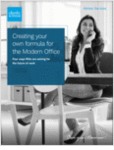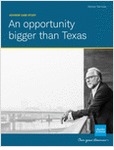What You Need to Know
- At issue is the DOL’s interpretation of the regular-basis prong of the five-part fiduciary test.
- According to a federal court, the “regular basis“ test must be applied on a plan-by-plan basis.
- Financial advisors should pay close attention to future developments and tread cautiously when evaluating their obligations.
Yet another court has disagreed with the Department of Labor’s interpretation of its fiduciary standard in cases involving rollovers of ERISA-plan assets into other types of retirement savings accounts. Under the current DOL rule, the agency has been clear that rollover advice can satisfy the test for determining fiduciary status and, thus, subject the advisor and firm providing the advice to fiduciary liability.
That stance has generated controversy from the start, as it’s entirely possible that rollover advice can be provided on a one-time basis without any significant relationship between the parties. A federal court has now created even more uncertainty in the world of fiduciary regulation — meaning that advisors should pay close attention to future developments and tread cautiously when evaluating their obligations.
DOL Stance on Rollovers: Background
Under the latest incantation of the DOL “fiduciary rule,” the DOL has reverted to the long-standing “five-part test.” Financial advisors will be classified as investment advice fiduciaries if they:
- Render advice as to the value of securities or other property, or make recommendations as to the advisability of investing in, purchasing or selling securities or other property
- on a regular basis
- pursuant to a mutual agreement, arrangement or understanding with the plan, plan fiduciary or IRA owner/plan participant that
- the advice will serve as a primary basis for investment decisions with respect to plan or IRA assets, and that
- the advice will be individualized based on the particular needs of the plan or IRA.
The DOL proposal is clear that rollover advice alone may be sufficient to generate investment advice fiduciary status (recommending a rollover from an ERISA plan to a non-ERISA IRA, for example). This represents a potential departure from prior guidance in the Deseret letter, where the DOL found that rollover recommendations alone might not subject an advisor to fiduciary status. According to the DOL, rollover advice can be made as a part of an ongoing relationship between client and advisor, or an anticipated future ongoing relationship between the parties.
In its FAQ No. 7, the DOL has also interpreted the “regular basis” prong to apply if a past relationship existed, by stating: “When the investment advice provider has been giving advice to the individual about investing in, purchasing or selling securities or other financial instruments through tax-advantaged retirement vehicles subject to ERISA or the Code, the advice to roll assets out of the employee benefit plan is part of an ongoing advice relationship that satisfies the regular basis prong.”
Further, giving advice to the plan is deemed to be equal to giving advice to the plan participants under the standard.
The Court Decision
On Feb. 13, a federal judge for the Middle District of Florida struck down the DOL’s interpretation of the five-part test for determining whether a financial advisor is a fiduciary when recommending a rollover transaction. At issue was the DOL’s interpretation of the standard for satisfying the “regular basis” prong of the five-part test in the context of rollover transactions.








 February 23, 2023 at 04:27 PM
February 23, 2023 at 04:27 PM












 Copyright © 2024 ALM Global, LLC. All Rights Reserved.
Copyright © 2024 ALM Global, LLC. All Rights Reserved.